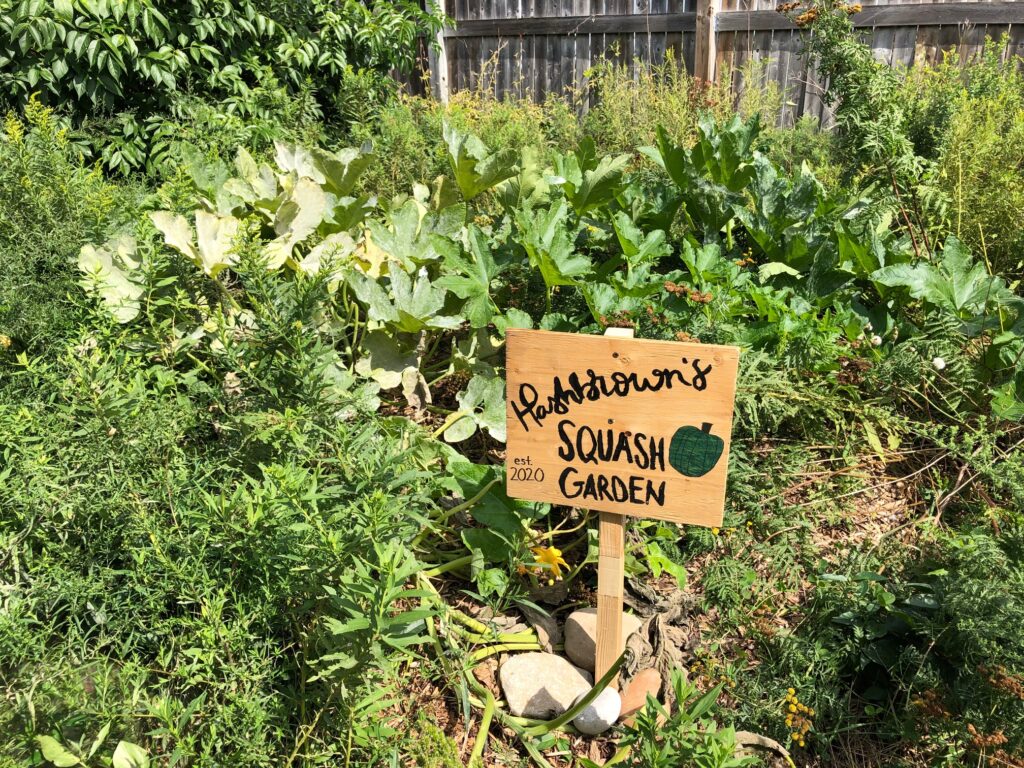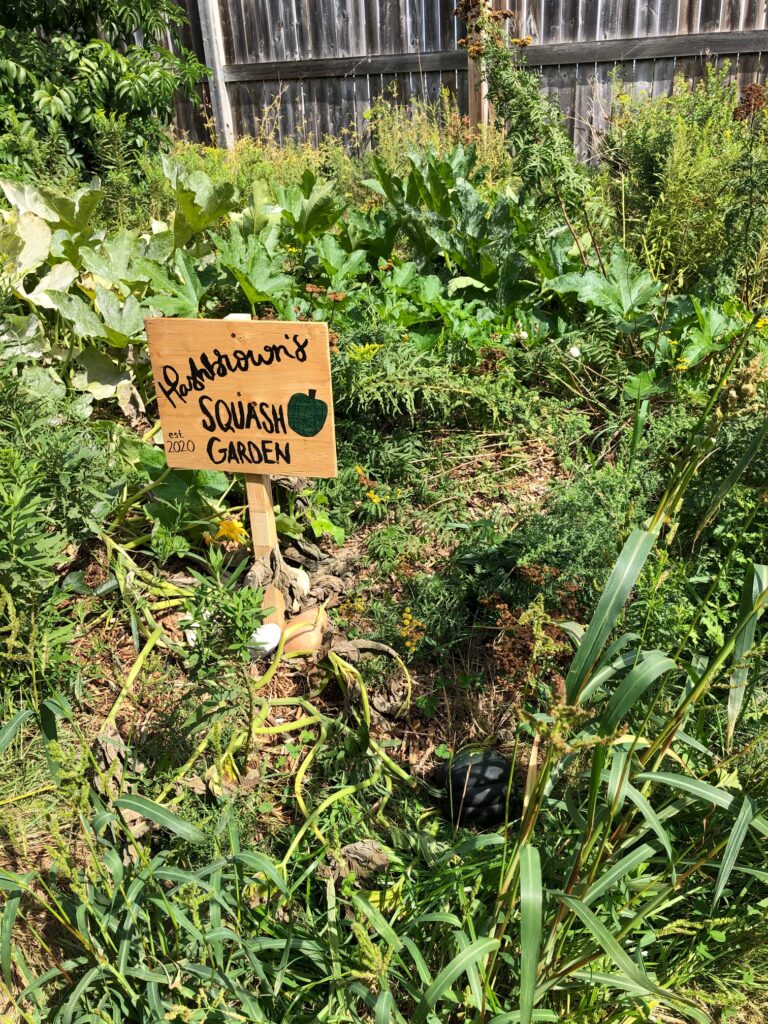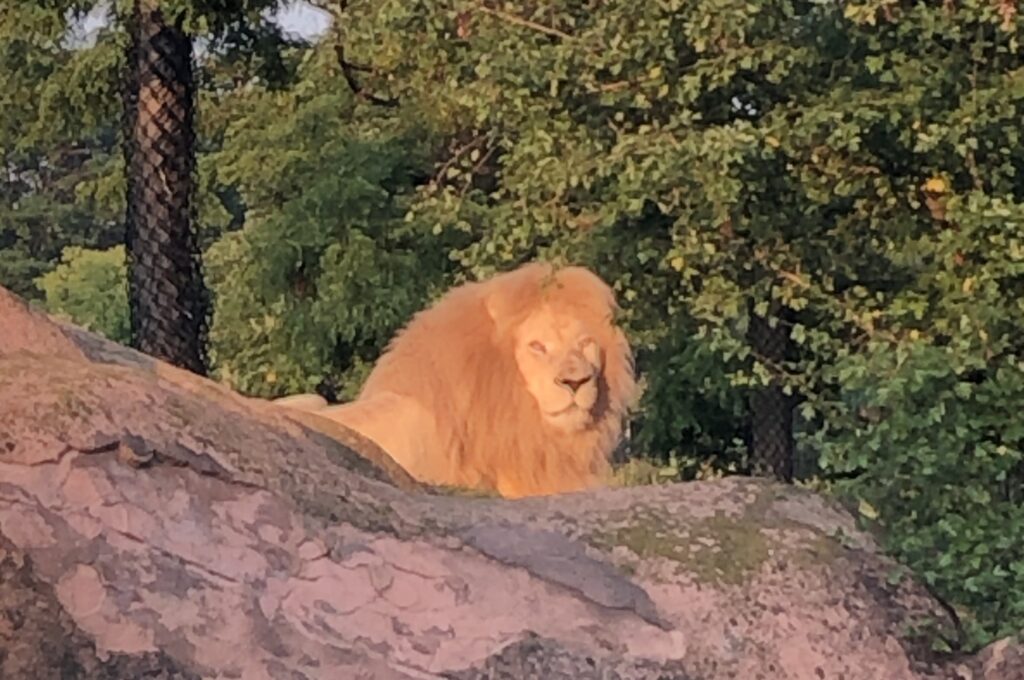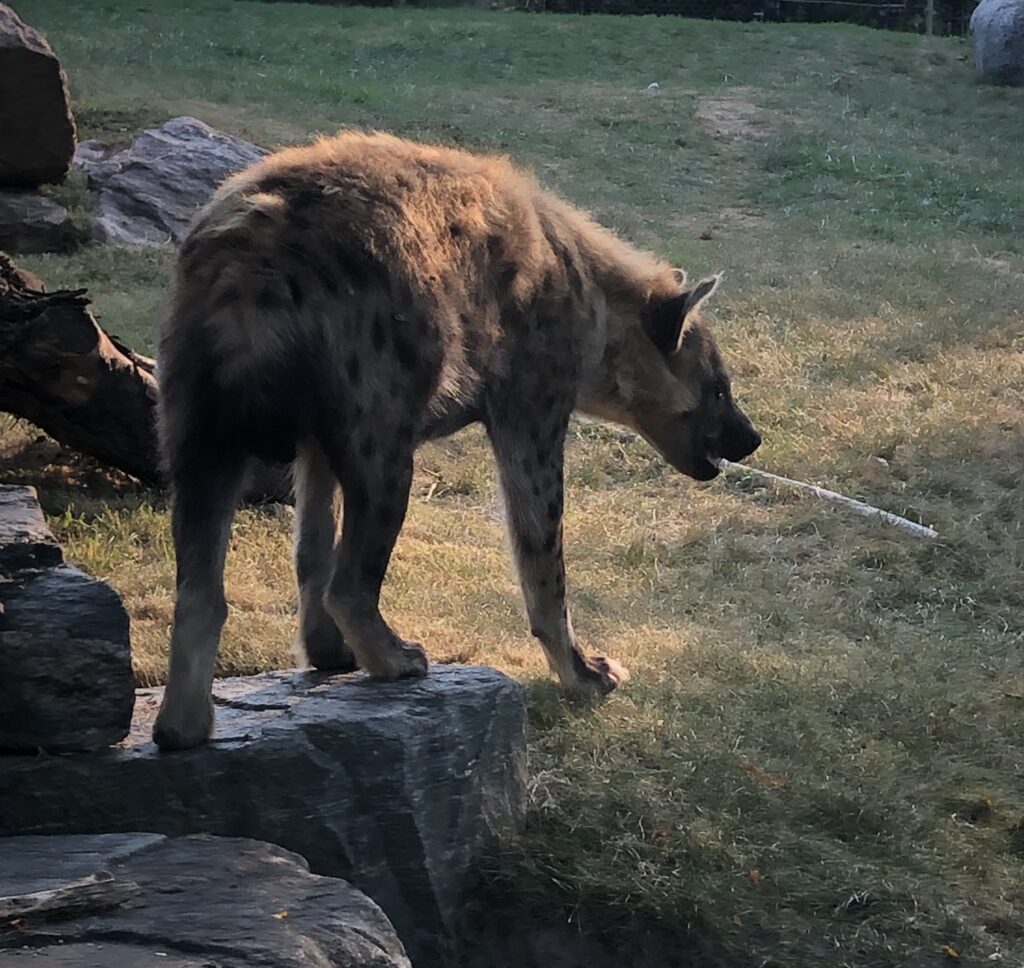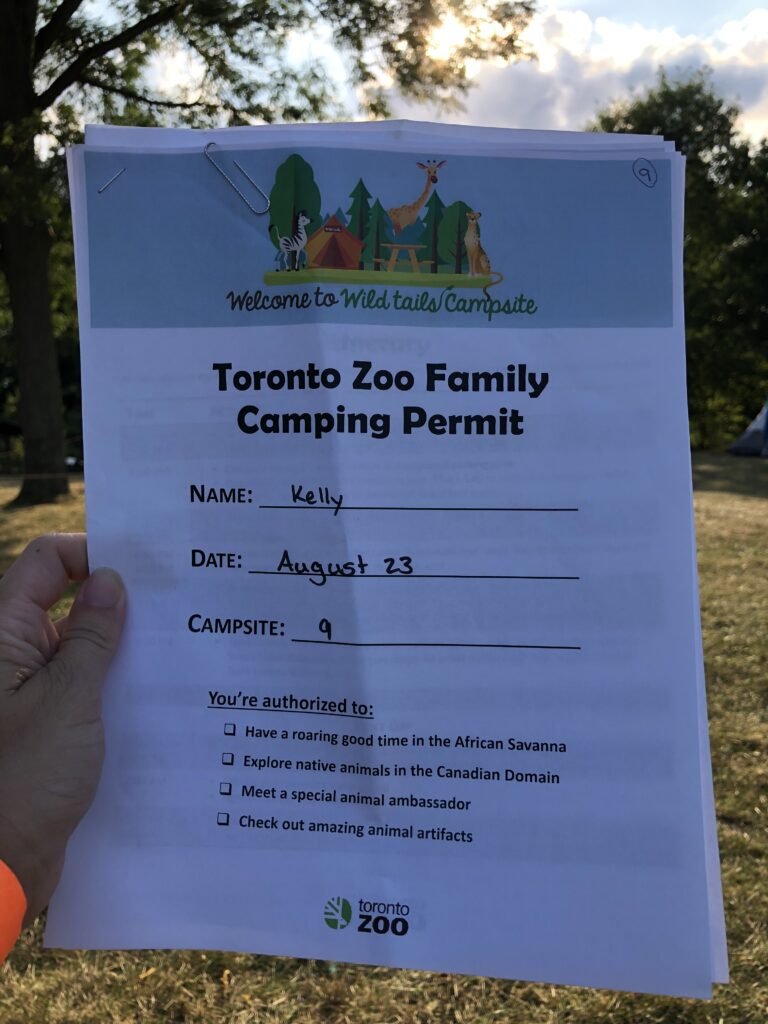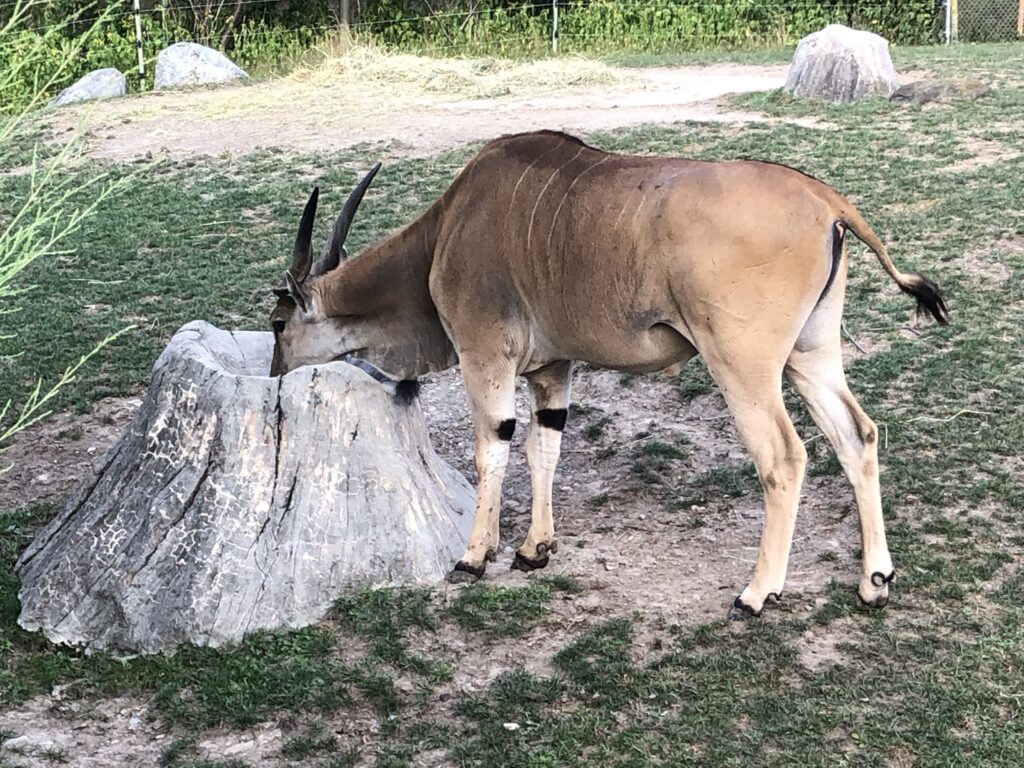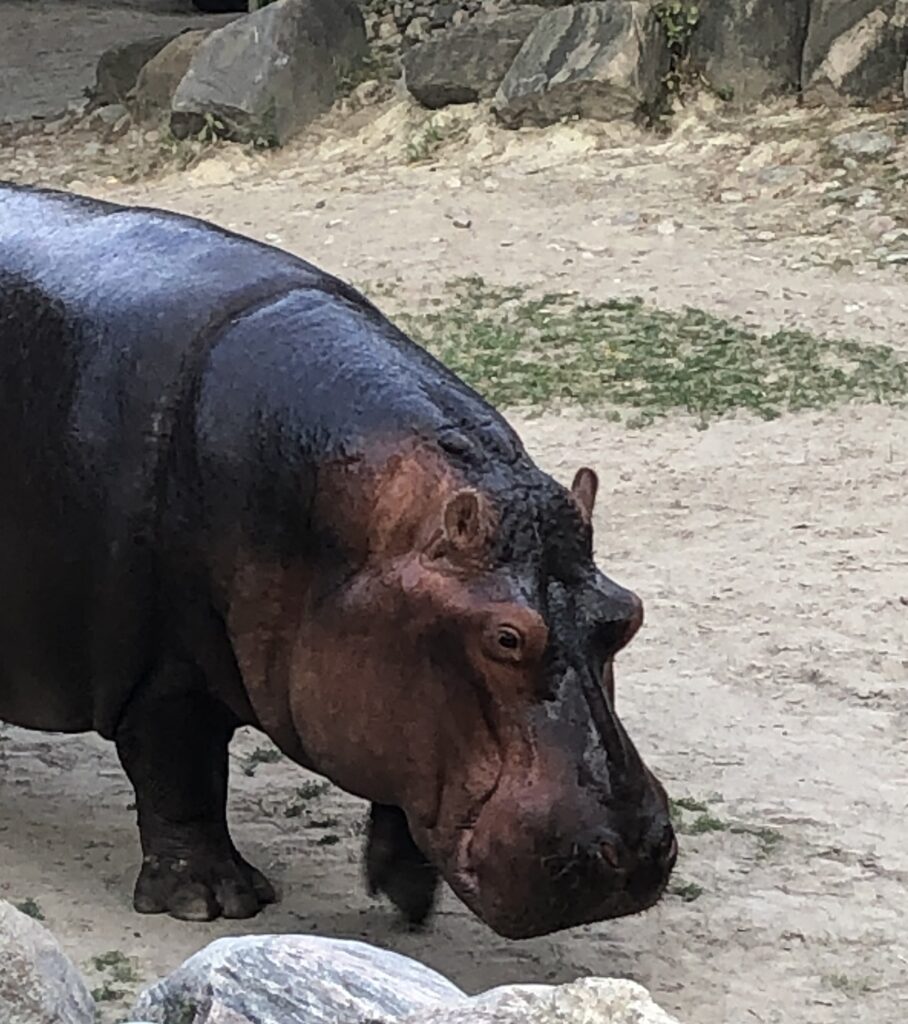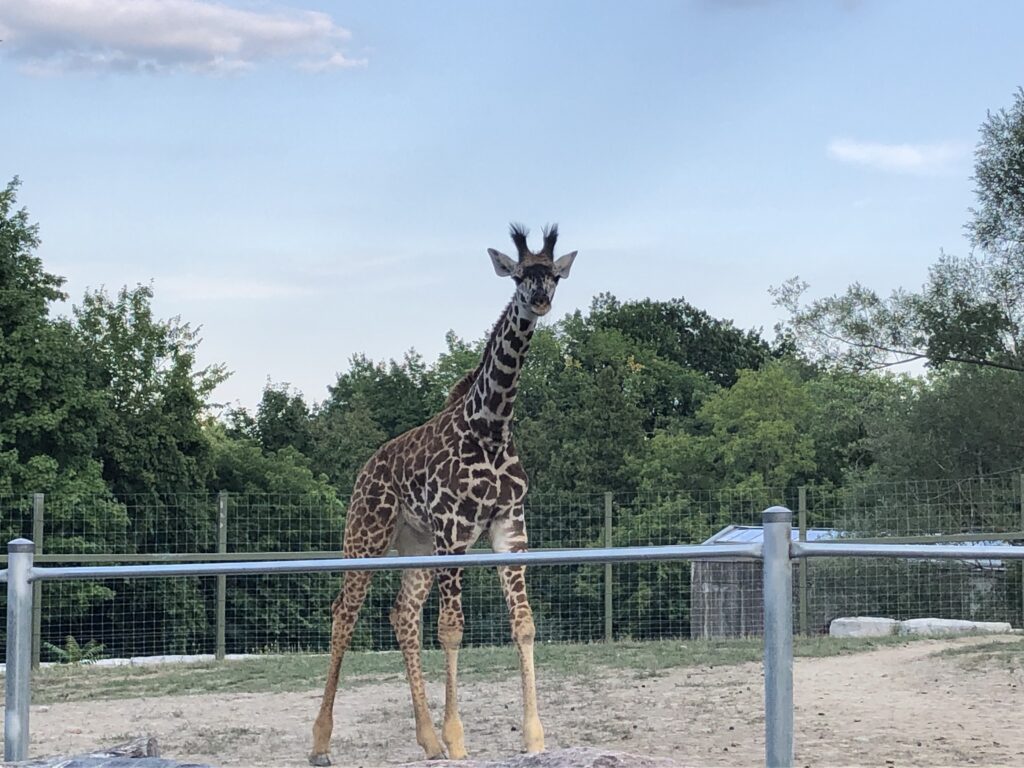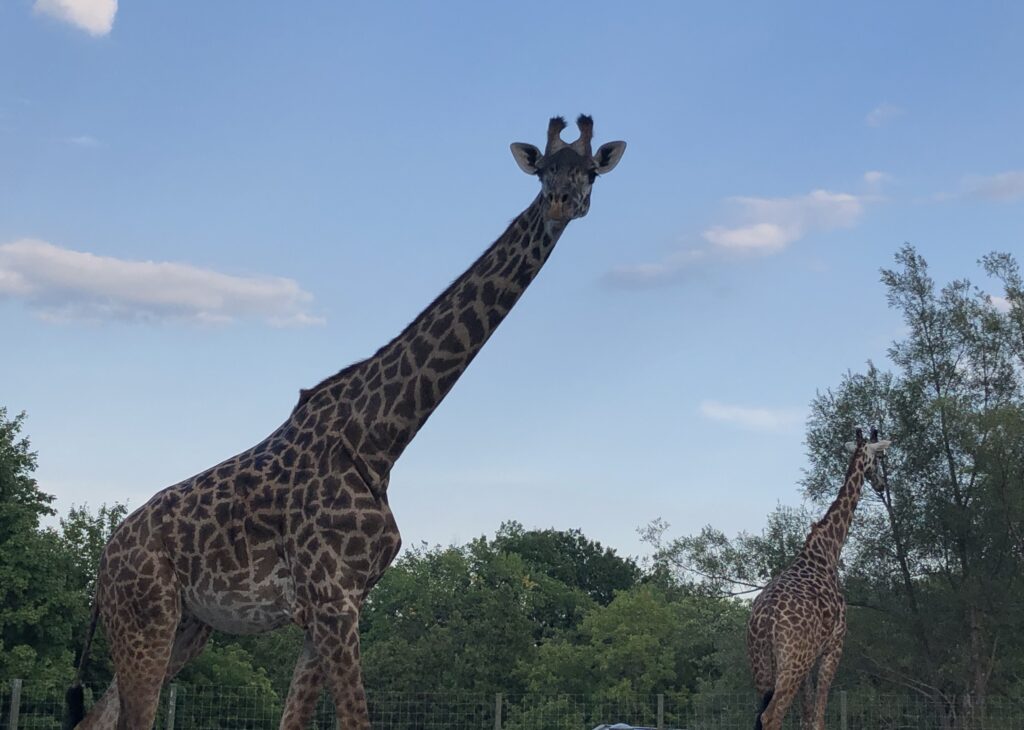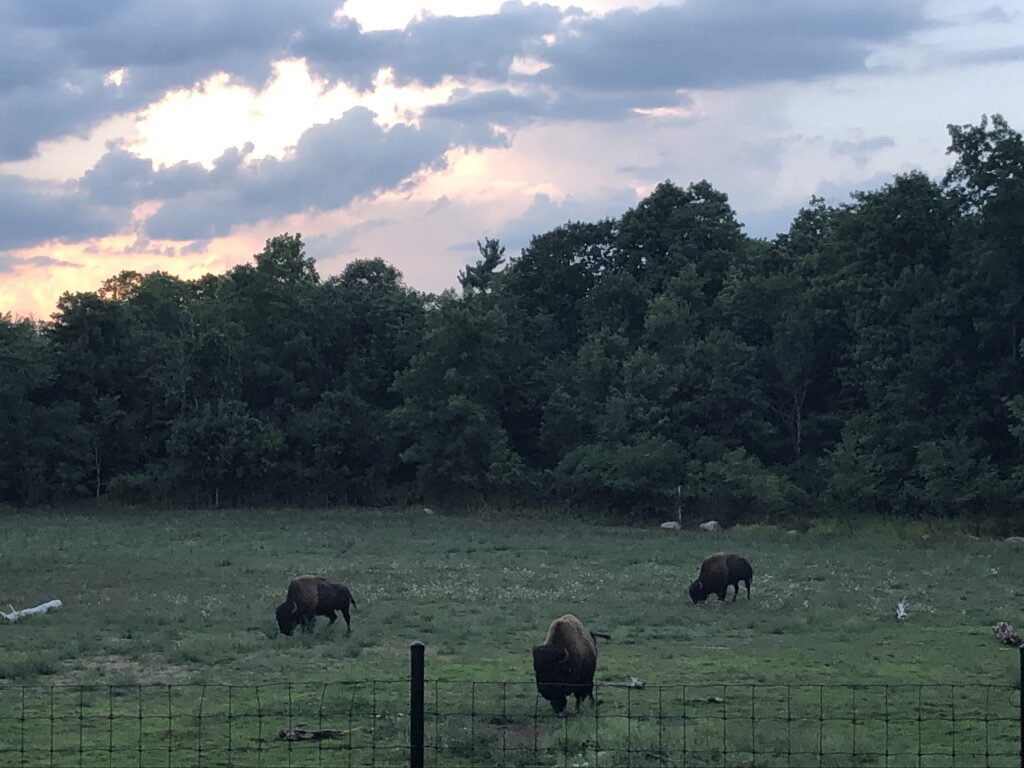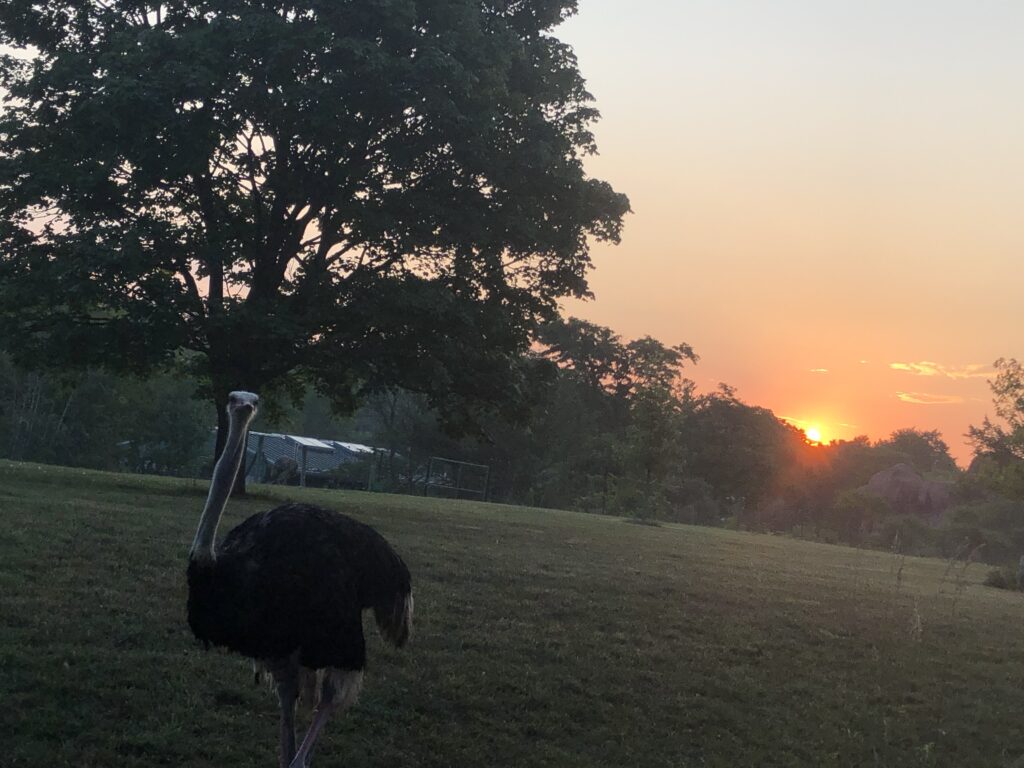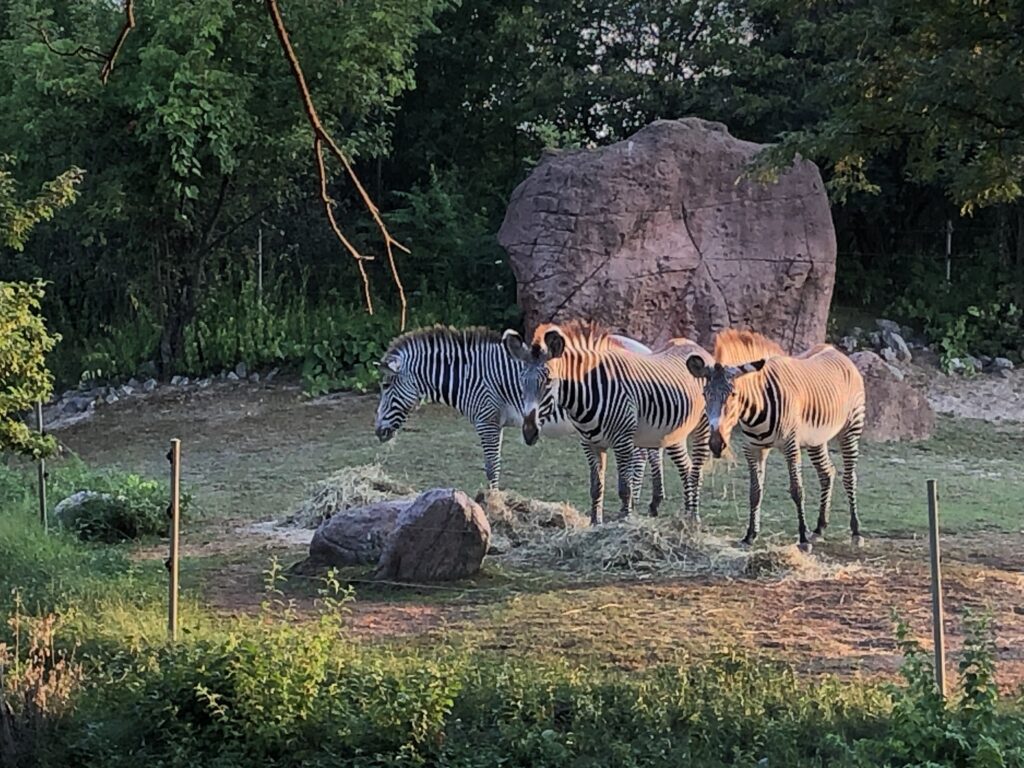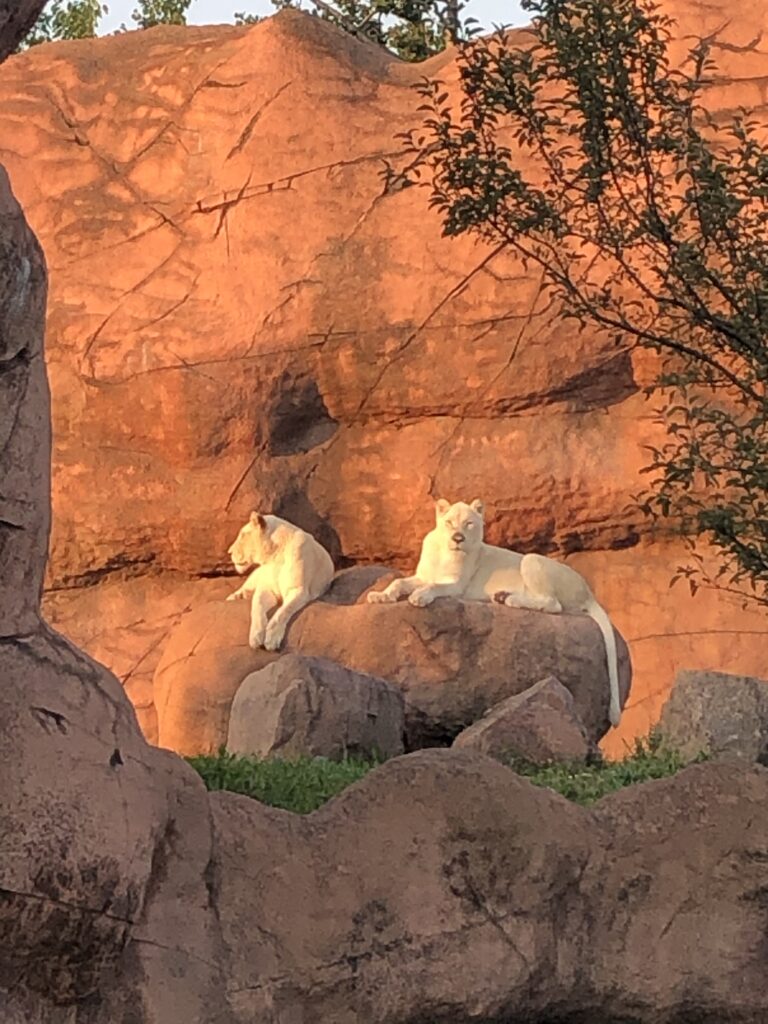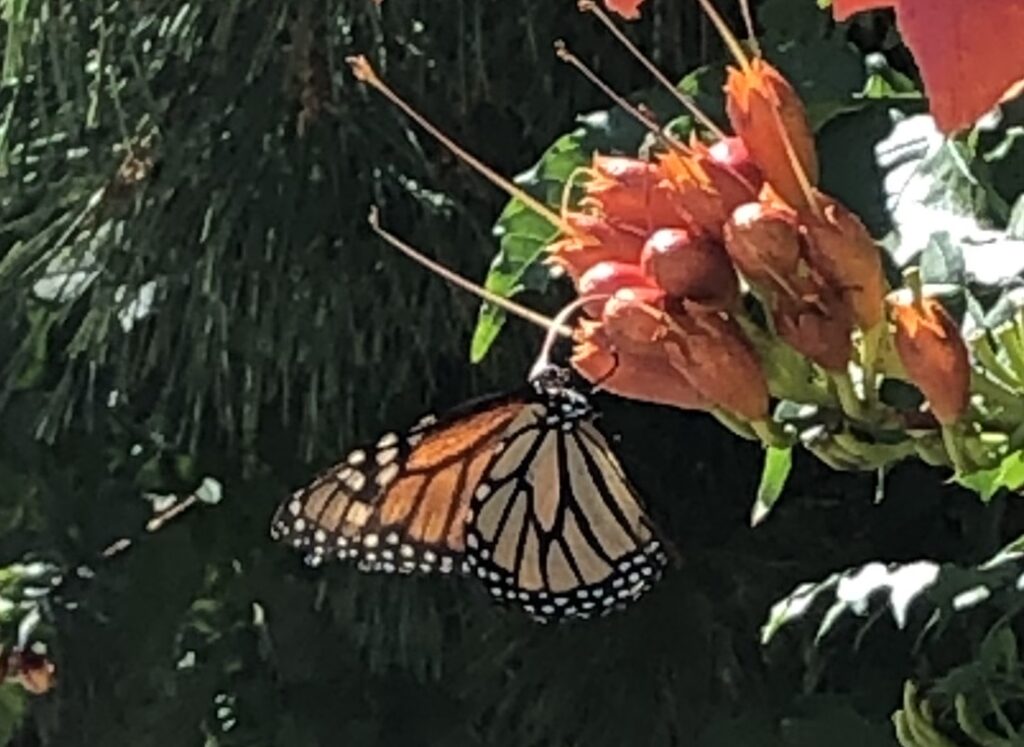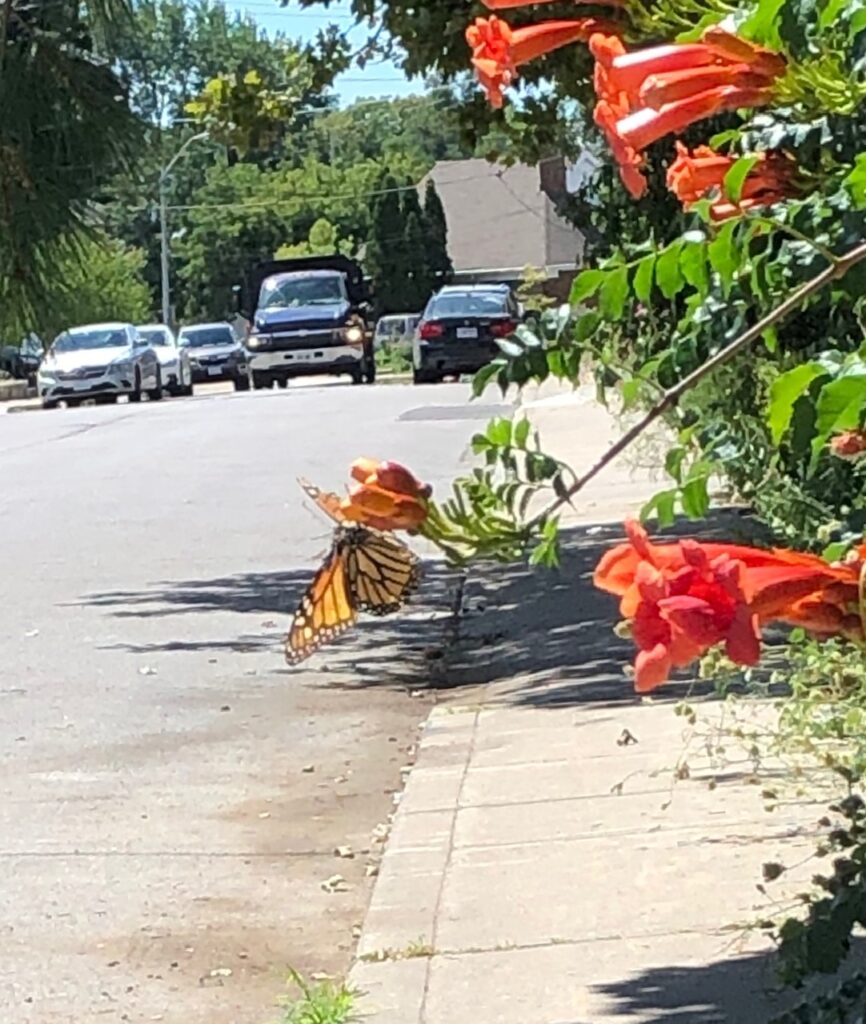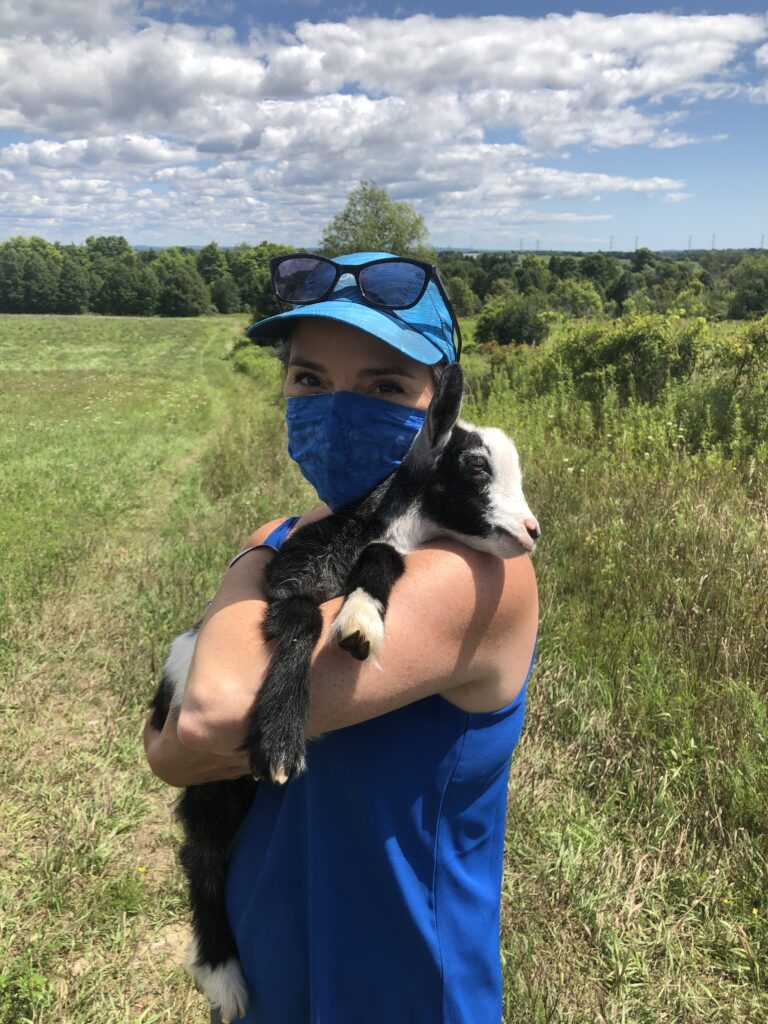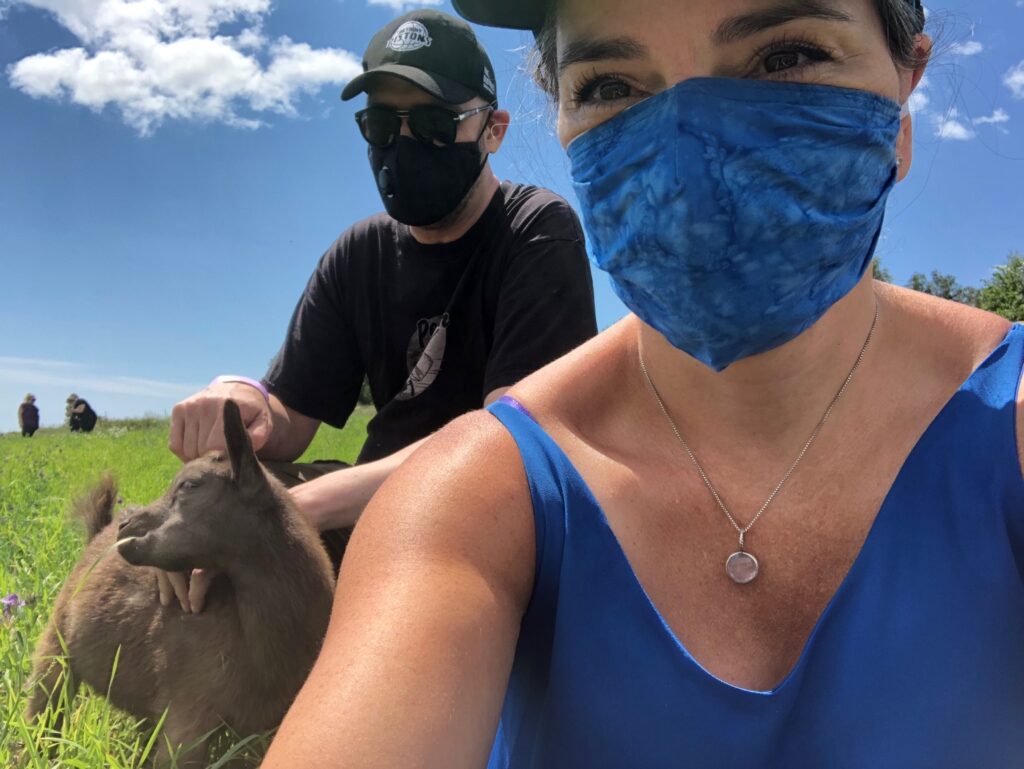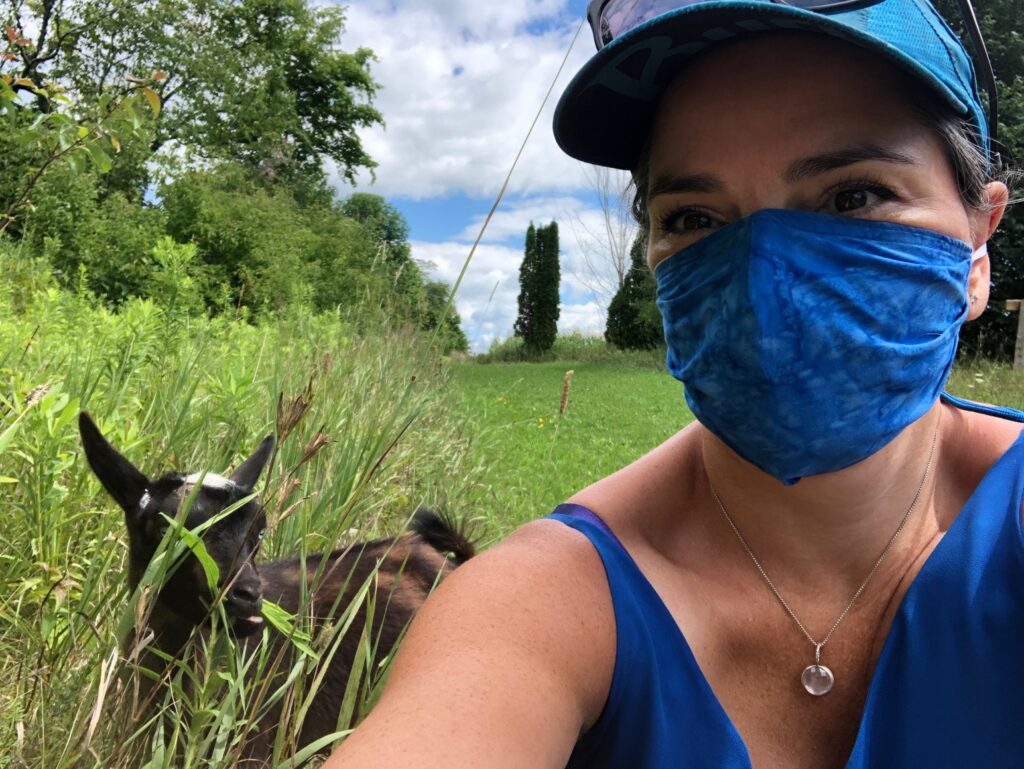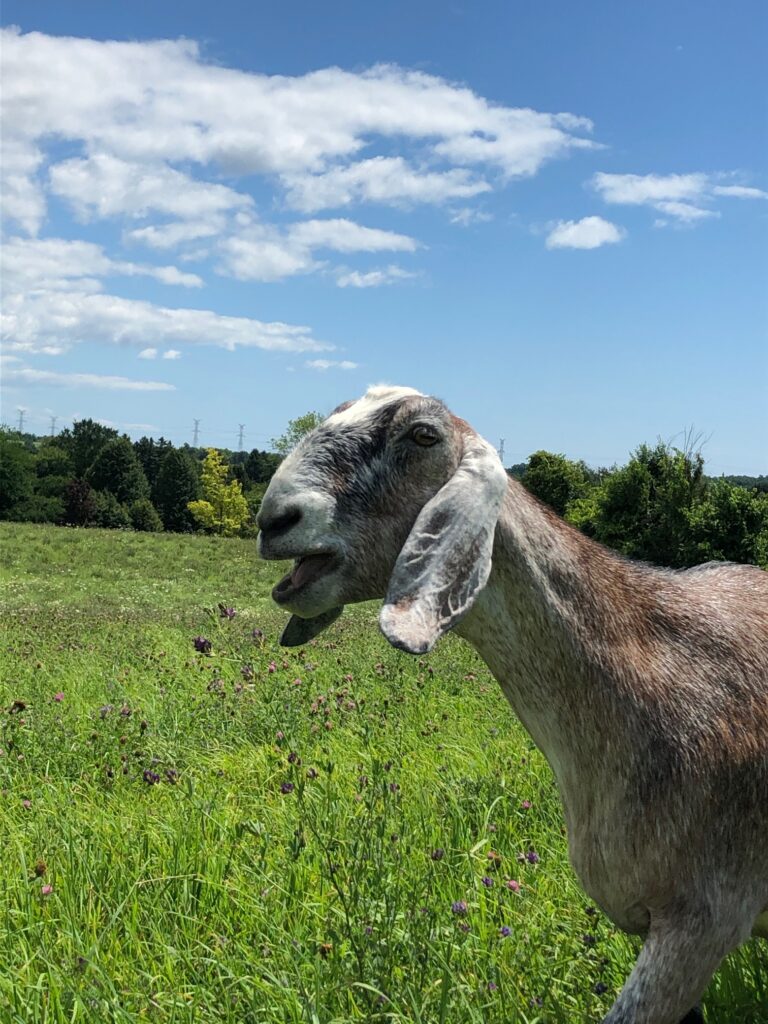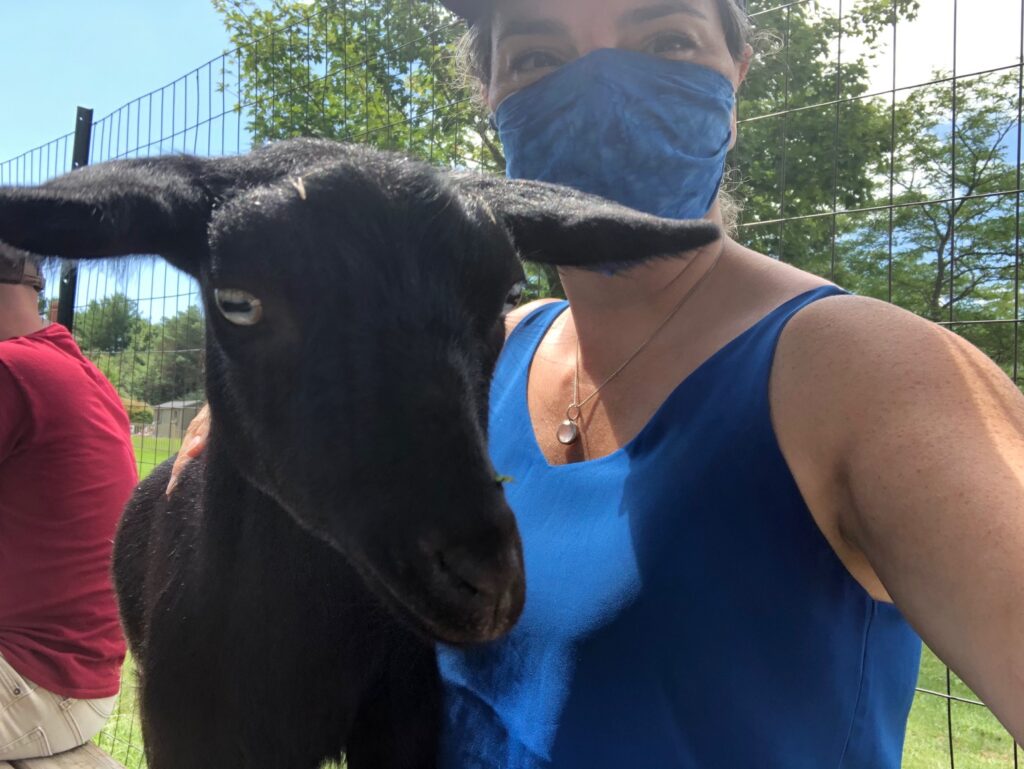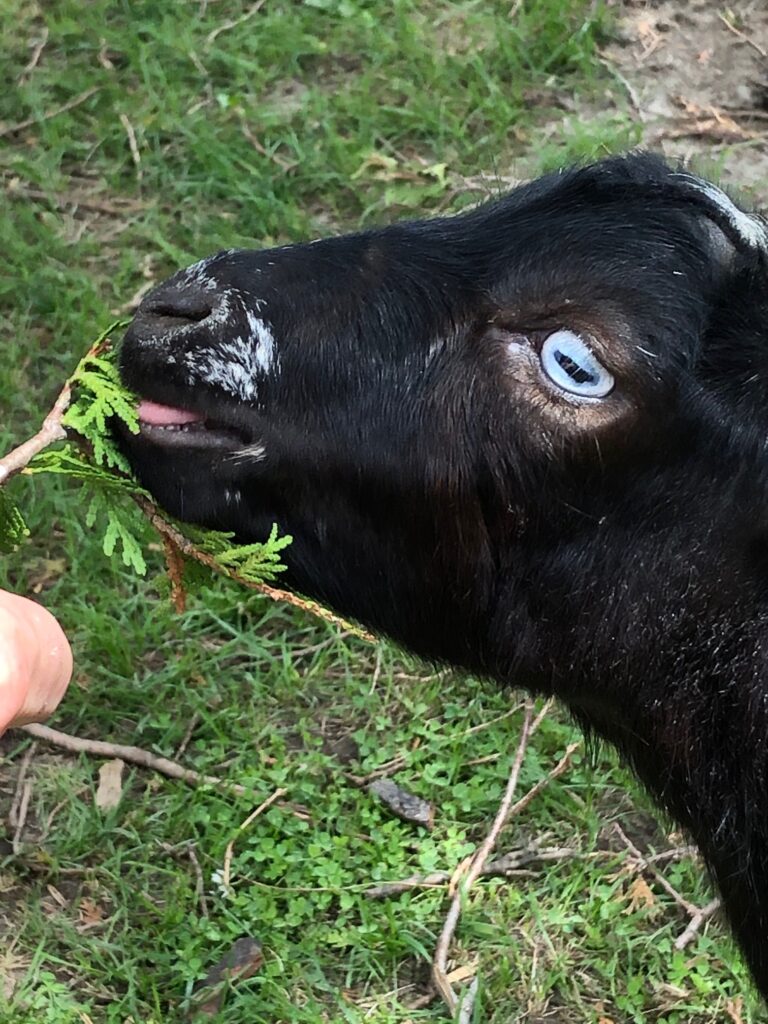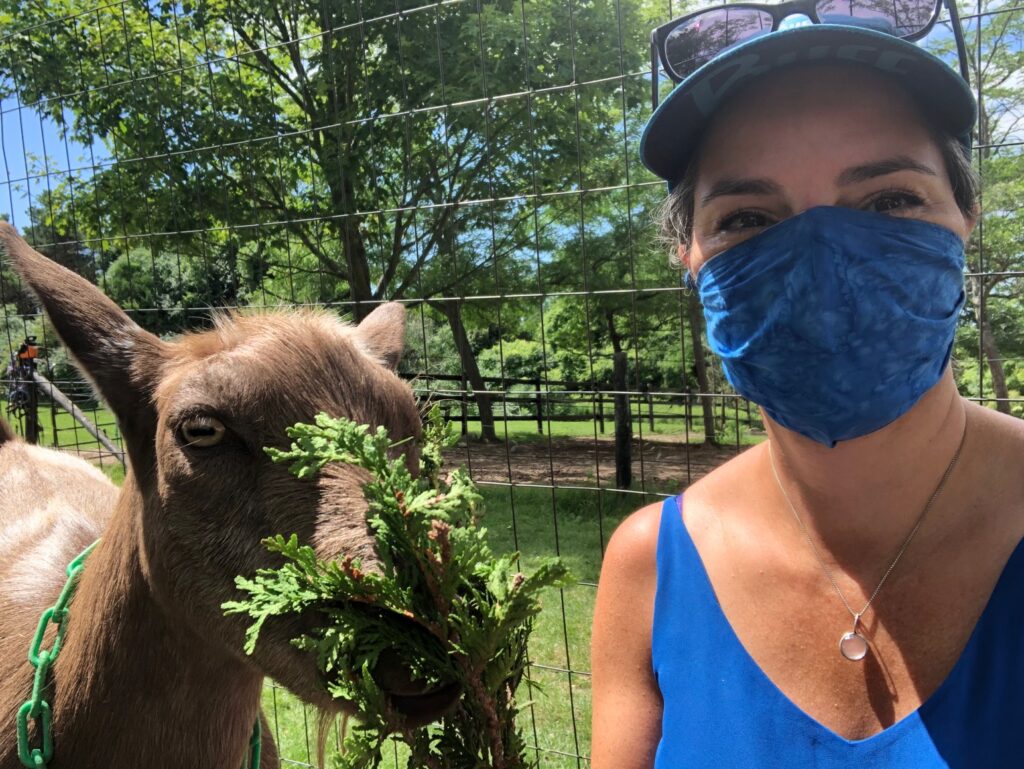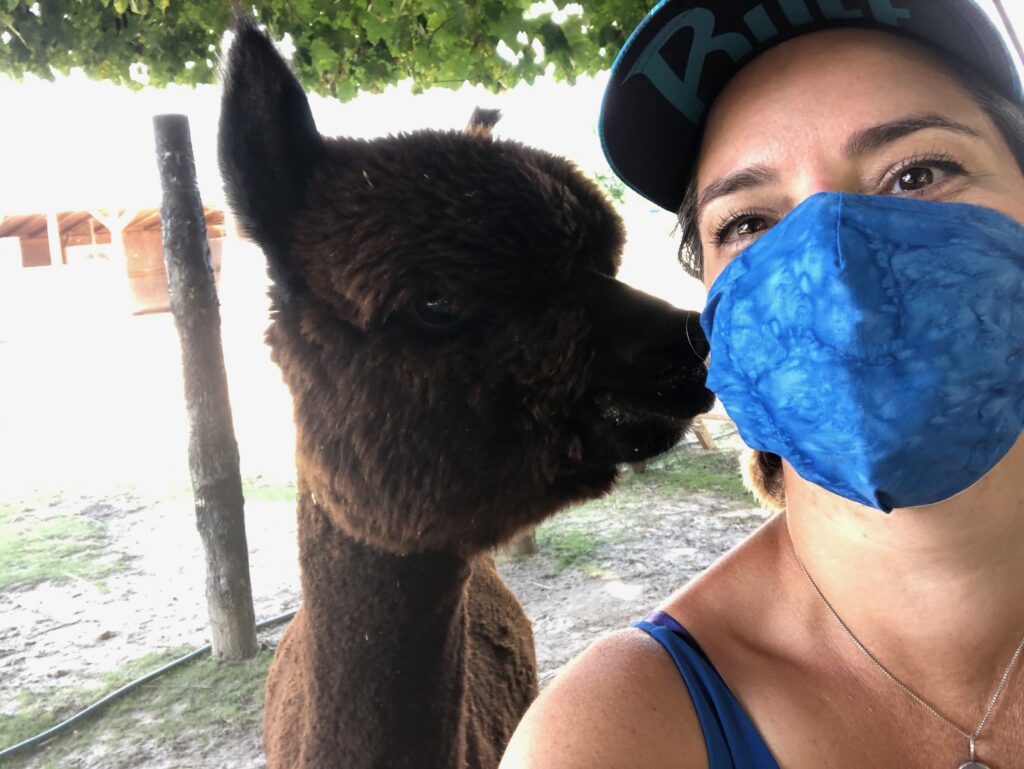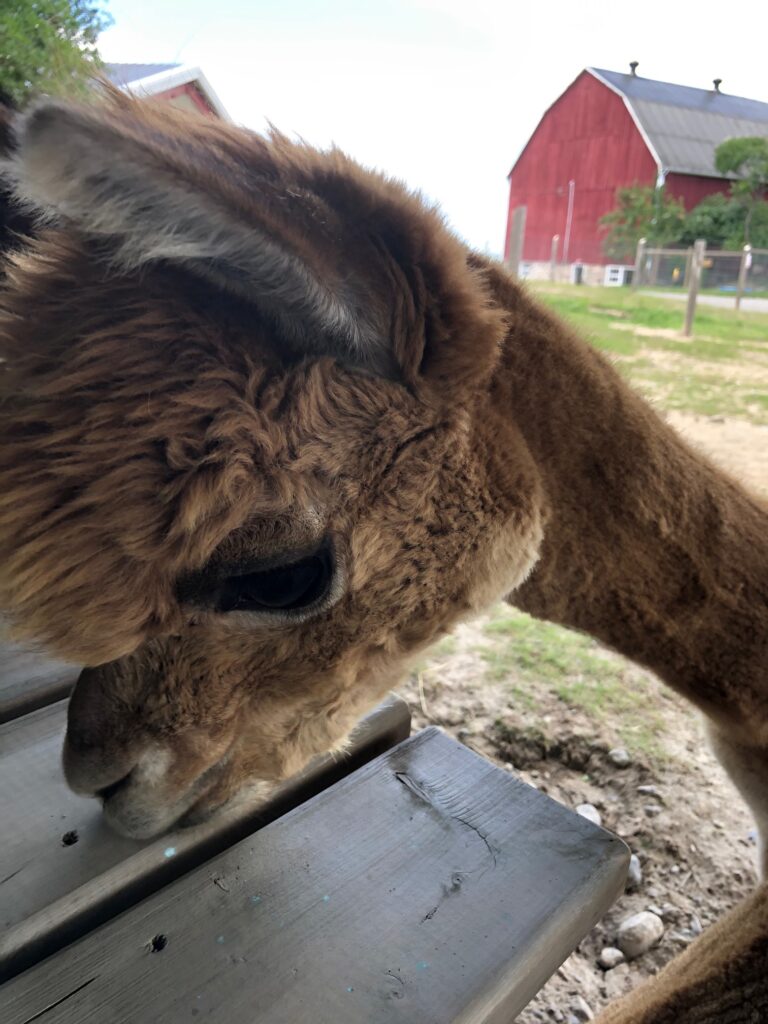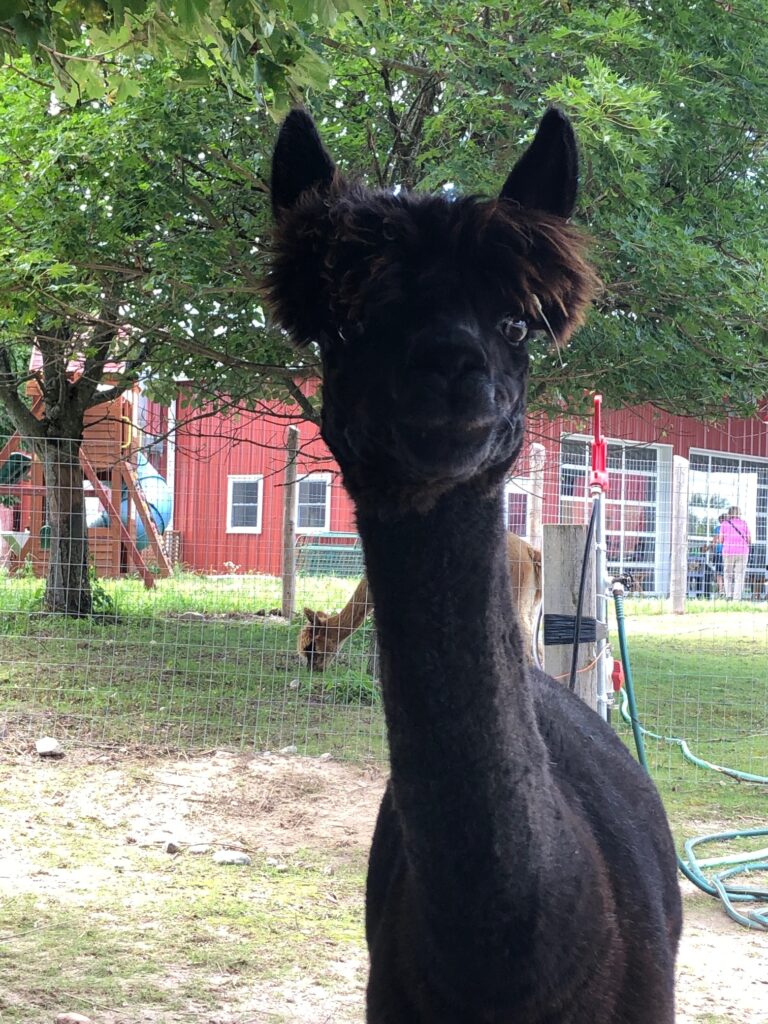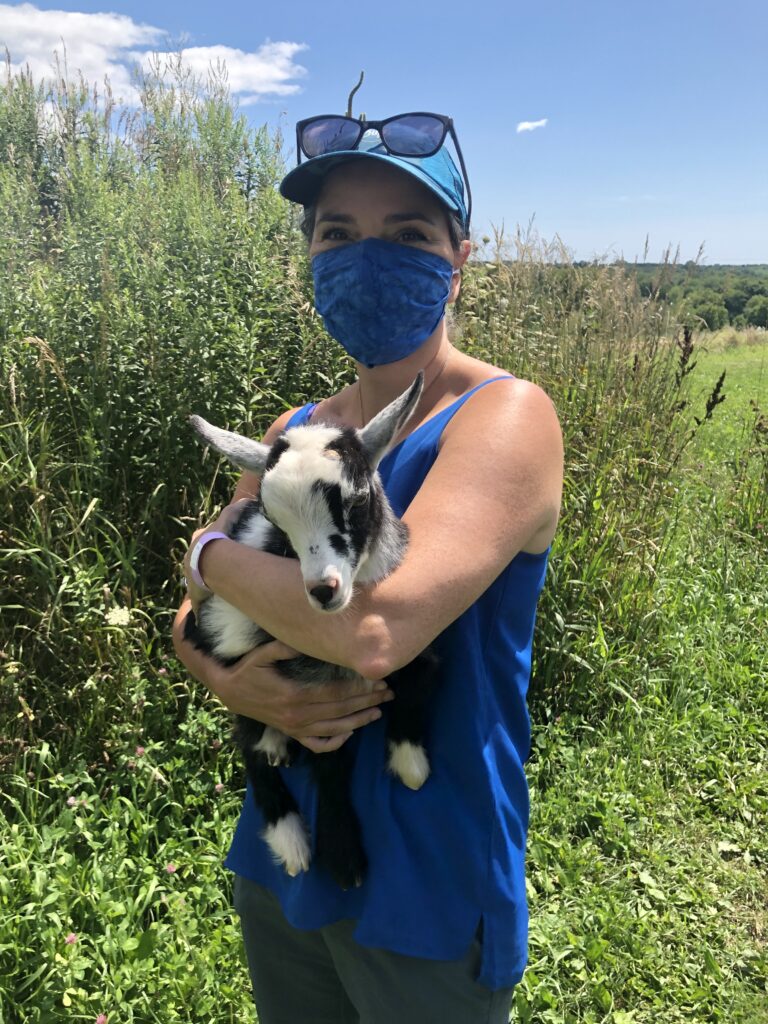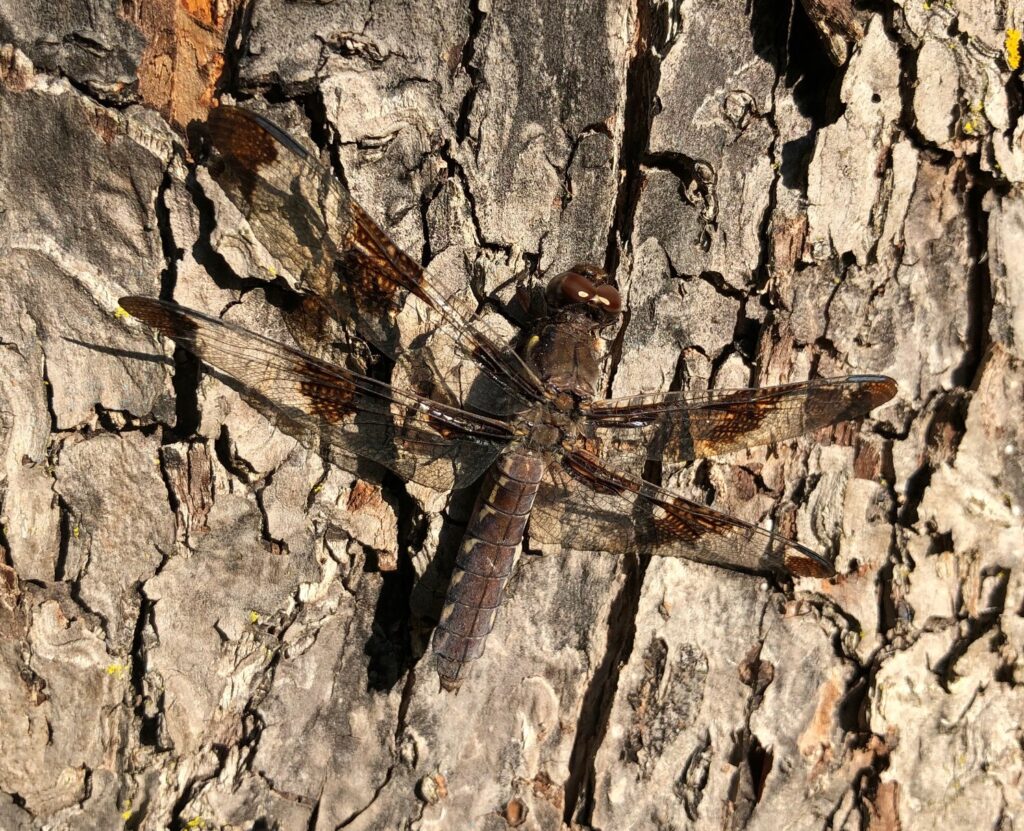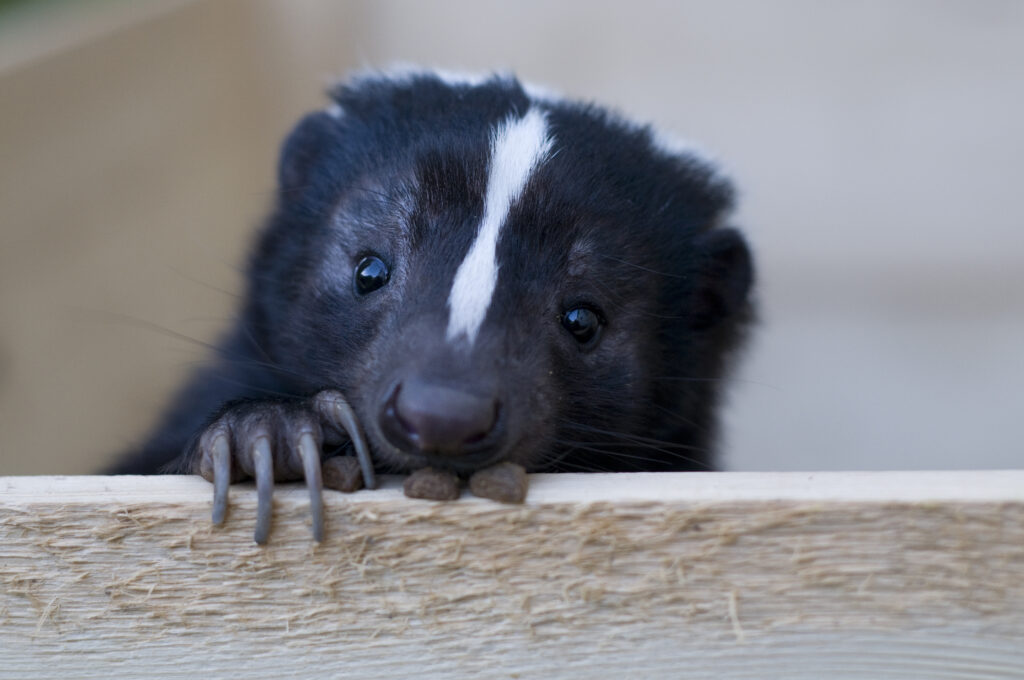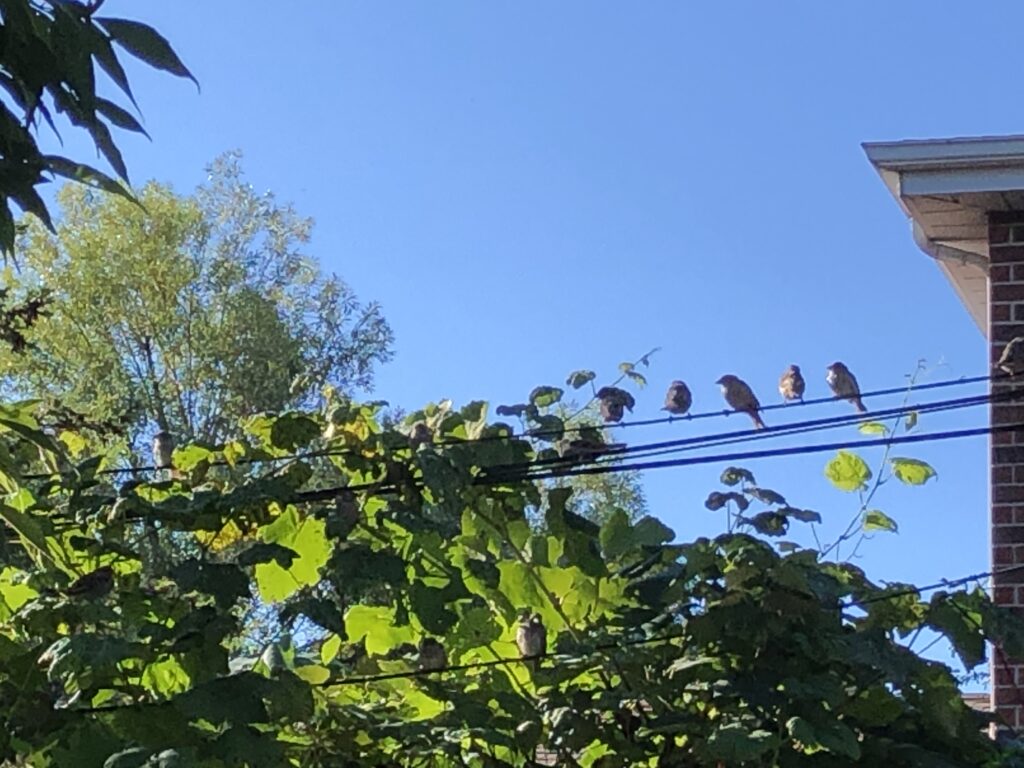
For the last few years, I’ve secretly felt like it’s a good sign or omen when the cardinals come to visit.
I first noticed the male in the wintertime a few years ago. He always seemed to arrive on a significant day. He was in my front yard tree the day I was leaving on a trip, there on my brother’s birthday in December, and there – a bright red heart in the middle of the skeletal branches of the tree on Valentine’s Day.
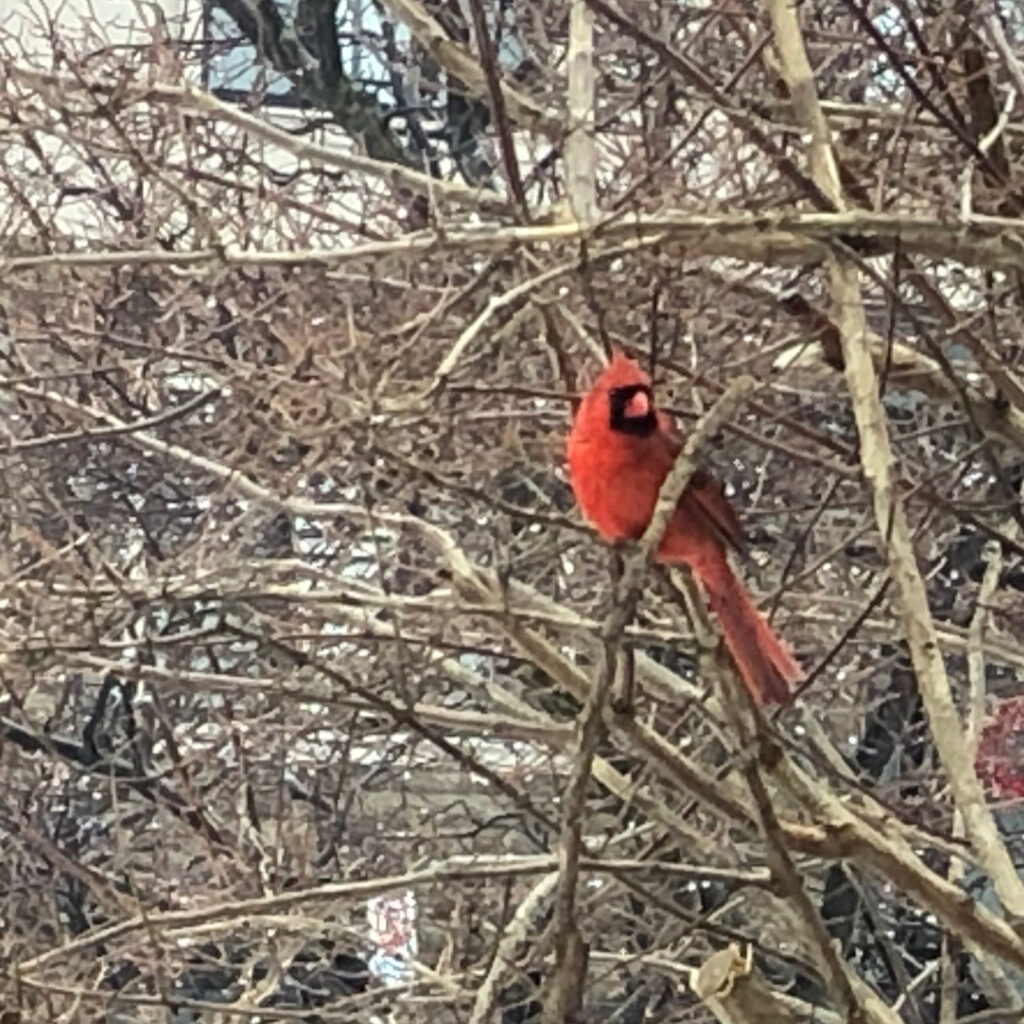
Now the male and female couple visit our back yard almost every day. Together and individually, depending on the day. I always know when they are here, even if I am inside the house: they announce themselves loudly and chirp a lively conversation in their distinct voices.
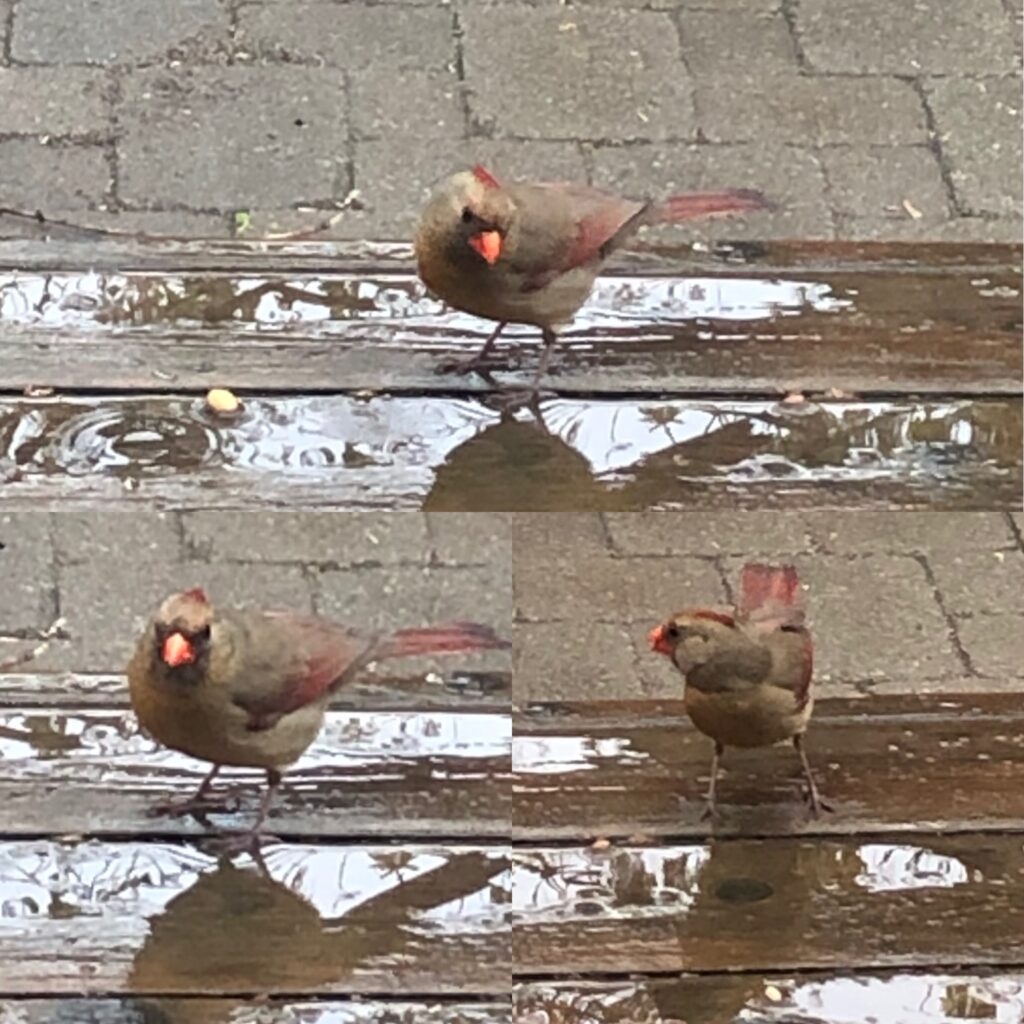
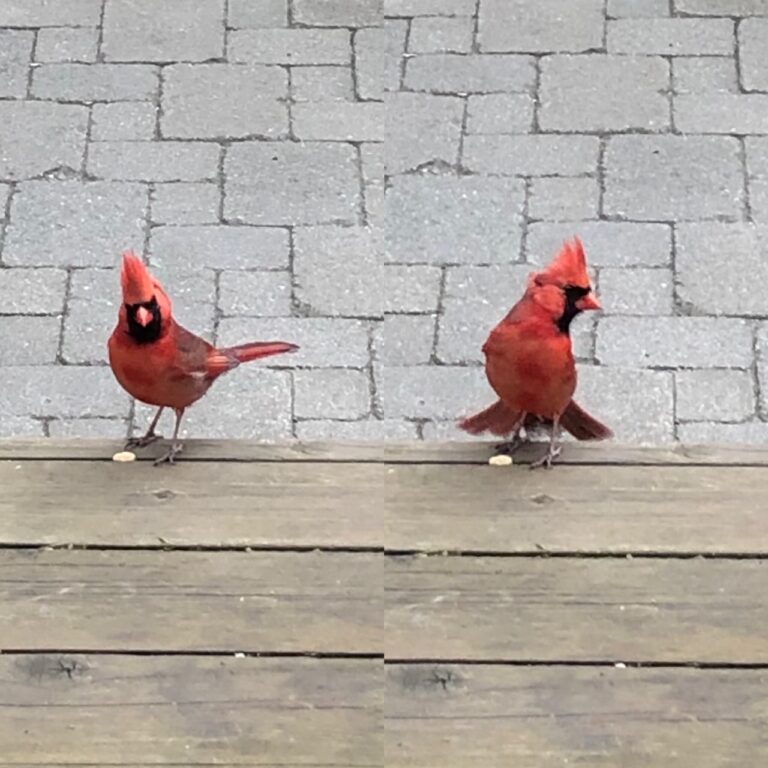
I am astonished at the birds who visit my back yard now that I put out nuts and seeds for them.
The first to arrive were the gang I call ‘My Peeps.’ the little chickadees and house sparrows. As I watched them, I was delighted to see them feeding each other and to notice how often they wipe their beak. Whew knew that little birds wipe their beaks so often?!?
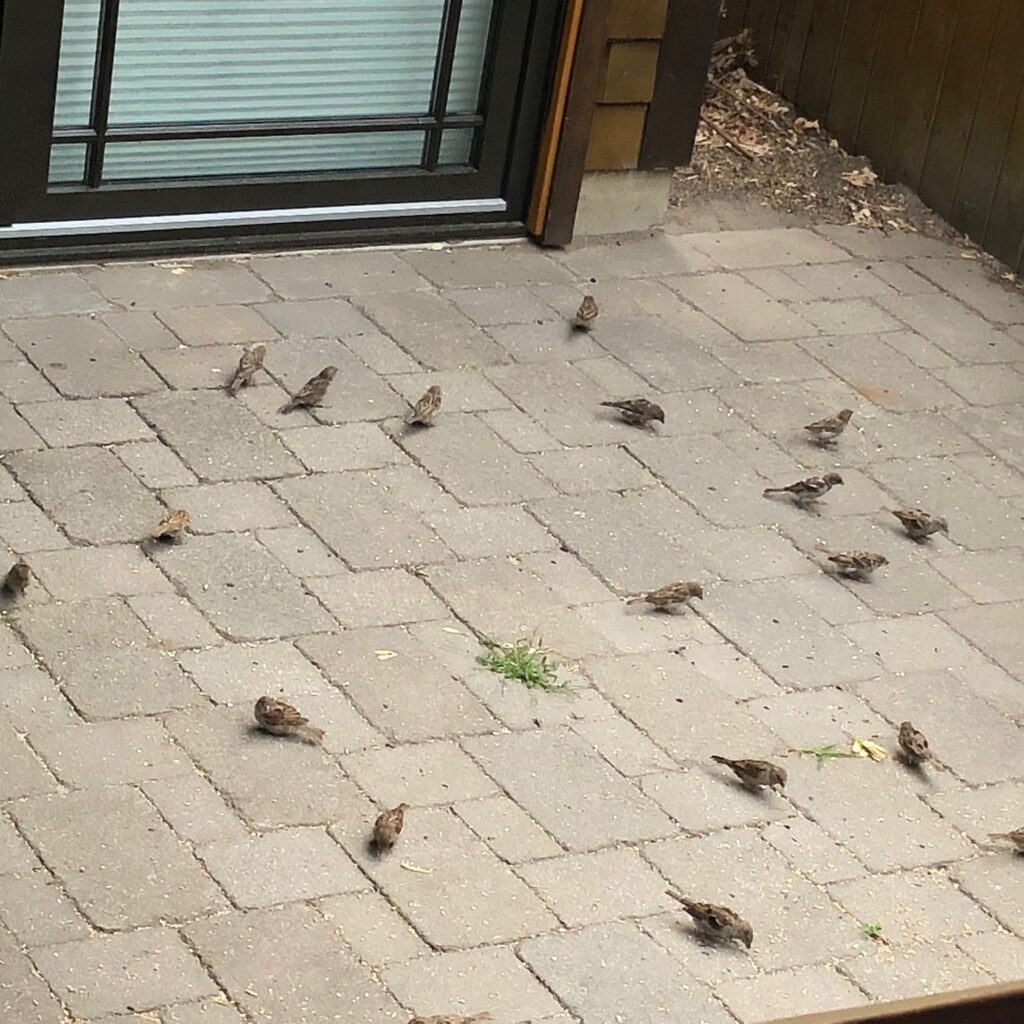
Joining them was a pretty little house finch who arrived next. It was a lovely surprise to see her red head and neck among the Peeps.
I think the next to arrive were the starlings.
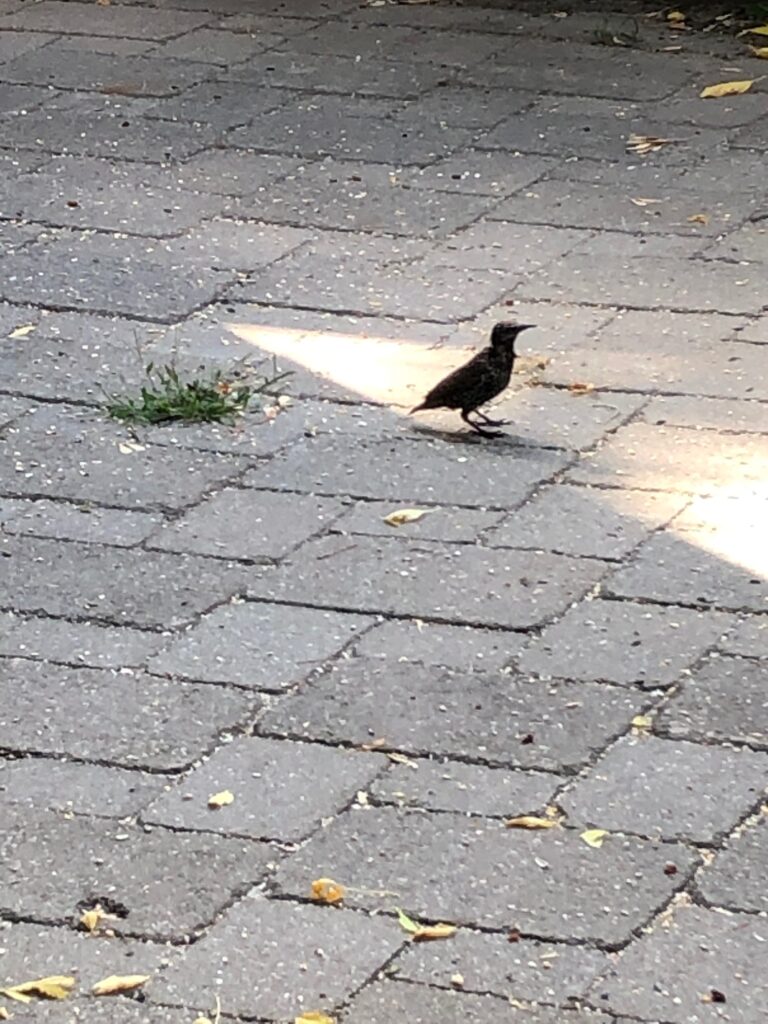
Most recently, a mourning dove has joined the party and added its distinct voice to the conversations. She usually shows up later in the day – late afternoon or early evening.
Occasional visitors include a family of Yellow-bellied sapsuckers tap tap tapping on the tree or side of the cedar shed.
One blue jay was an occasional visitor and has now become a more frequent guest. Just this week for the first time there were two blue jays on my porch railing and in the tree. What a joy!
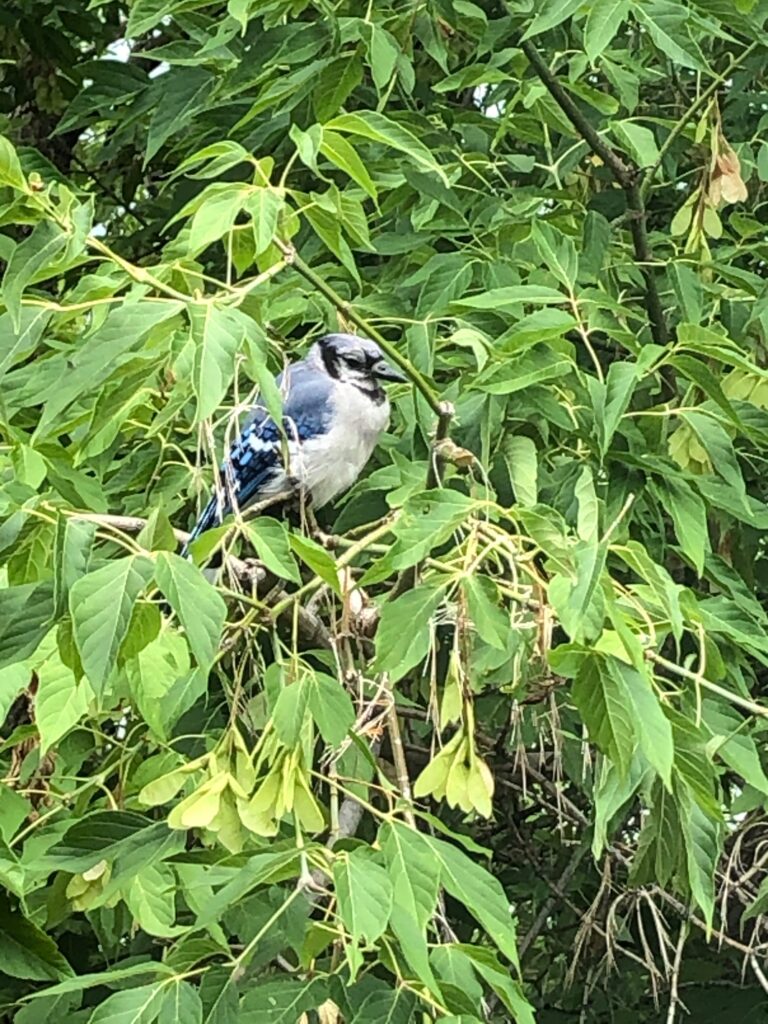
I see little goldfinches in parks all over Toronto and once in my backyard tree. But they are so fast and skittish that I haven’t (yet!) been able to photograph one.
The robins who visit my yard have, interestingly, not been interested in the nuts and seeds -perhaps they are more carnivorous, preferring worms and insects? But it is so much fun to watch them and others splash up a storm in the birdbath in the yard. I’ll admit that I was not a big fan of the look of the concrete birdbath, but this summer I’ve seen so many birds frolicking in the water that I absolutely love it now!
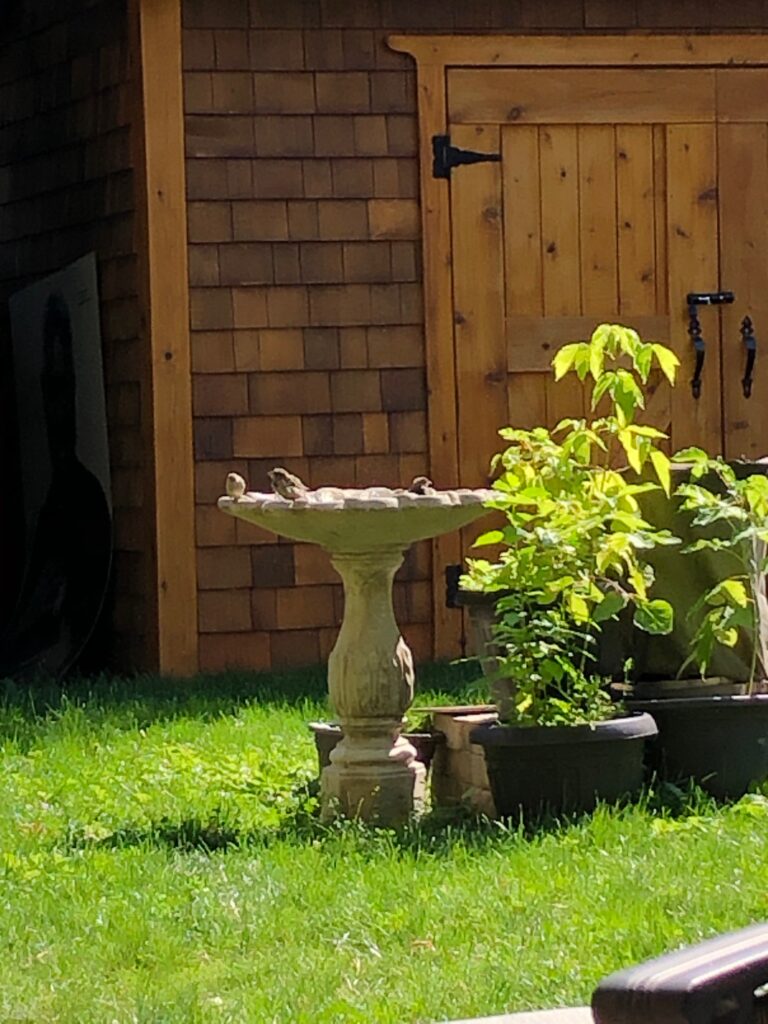
My friend Suzanne and so many other people in the city have been birdwatching for years, and are super knowledgeable about who everyone is. I can’t yet identify most of my backyard guests by sight or by call, but I look forward to getting to know them – and their distinct personalities and voices.

